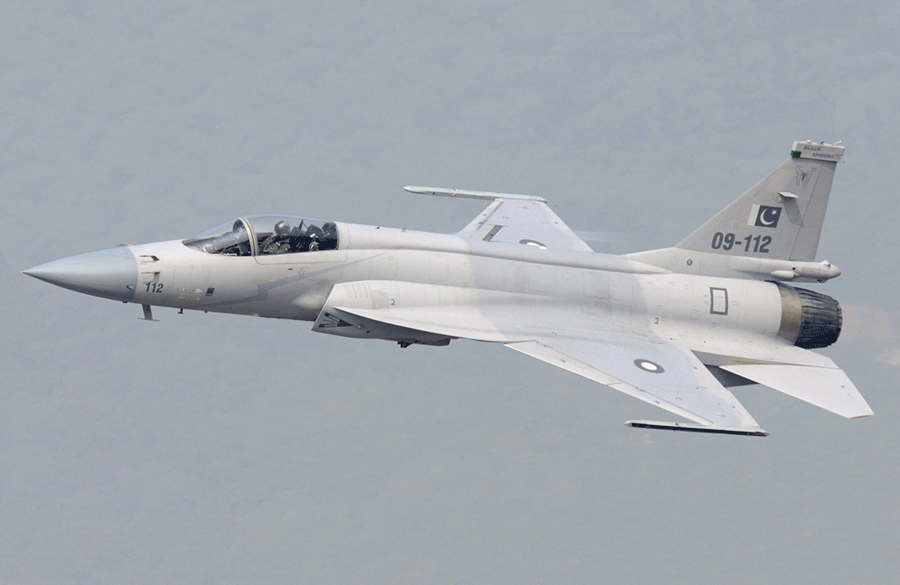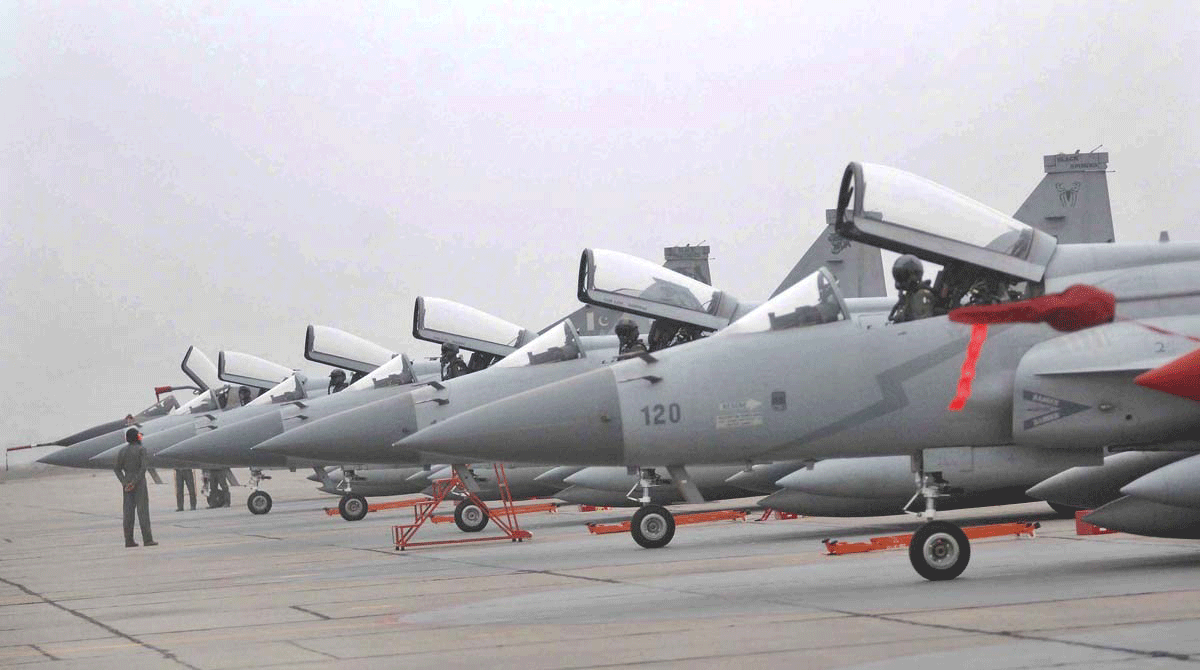Neither War, Nor Peace
By Amir Zia | Cover Story | Published 6 years ago
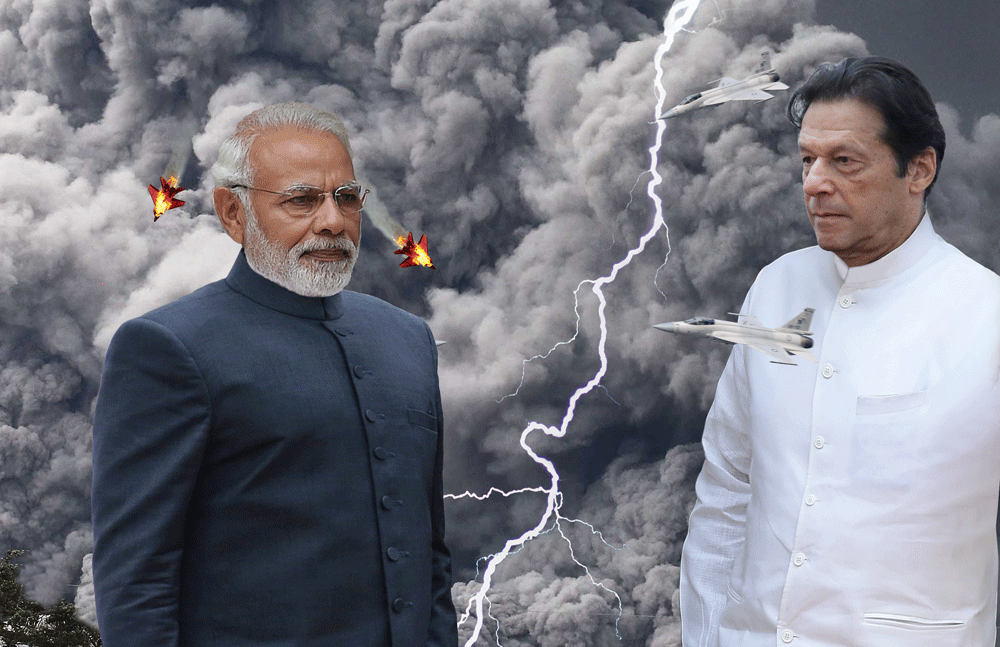
After all the menacing warmongering, dangerous posturing and tit-for-tat attacks, Pakistan and India have apparently pulled back from the brink of a full-blown war. And if the credit for preventing an all-out conflict goes to the hectic overt and covert efforts by global and regional powers, Pakistan unarguably also helped in de-escalation through its measured military and diplomatic response to the Indian aggression and display of extreme restraint despite serious provocation.
The uneasy lull notwithstanding, Pakistani and Indian troops remain locked in a heavy exchange of mortar and artillery fire along the Line of Control (LoC) in the divided Himalayan region of Kashmir And in other border areas. And on March 5, the Pakistan navy foiled an attempt by an Indian naval submarine to covertly enter Pakistani waters. The disputed
frontier – where the Indians have resorted to more than 3,000 ceasefire violations in 2018 alone – is likely to remain an intermittent conflict zone in the foreseeable future, as the prospects for peace are bleak given India’s intransigent stance on the issue.
Furthermore, while the Pakistani military – as per its standard operating procedure –makes sure to fire with care to avoid villagers being hit in Occupied Kashmir, Indian forces continue to target civilians along the LoC and the working boundary.
And so, against the backdrop of deafening artillery fire and a pounding of mortar shells in various areas of the disputed region, Kashmir is once again calling for international attention as the most dangerous nuclear flashpoint in the world. Any sharp escalation of hostilities and even a small miscalculation by either of the nuclear-armed South Asian neighbours has the potential to spin out of control and result in a doomsday scenario for not just the region, but even the world.
Using the bogey of terrorism, India is setting the pace of the conflict against Pakistan, through both words and actions.
Islamabad’s repeated peace overtures and offers for talks on assorted issues, including Kashmir and the challenge of terrorism in the region, have so far been haughtily rejected by New Delhi. And Prime Minister Imran Khan’s decision to free Abhinandan Varthaman, the pilot of the downed Indian fighter aircraft, is being portrayed by the jingoistic Indian media and leadership as an act induced by external pressure rather than a goodwill gesture.
And so while international diplomatic efforts have helped avert the danger of a full-blown war for now, chances of sustained and meaningful bilateral talks between the two countries before or after the Indian general elections – scheduled in April-May this year – appear slim.
Even if talks resume – as they have done several times in the past – whether or not the two neighbours will be able to take even few baby steps towards resolving their disputes, including the core dispute of Kashmir, remains a key question. And if the core issue remains unresolved, will Pakistan and India be able to carve out a roadmap for peace and confidence-building measures, or at least opt for a prolonged season of cold peace? In the current environment of hostilities, particularly from the Indian side, the possibility of even holding talks for the sake of talks appears remote.
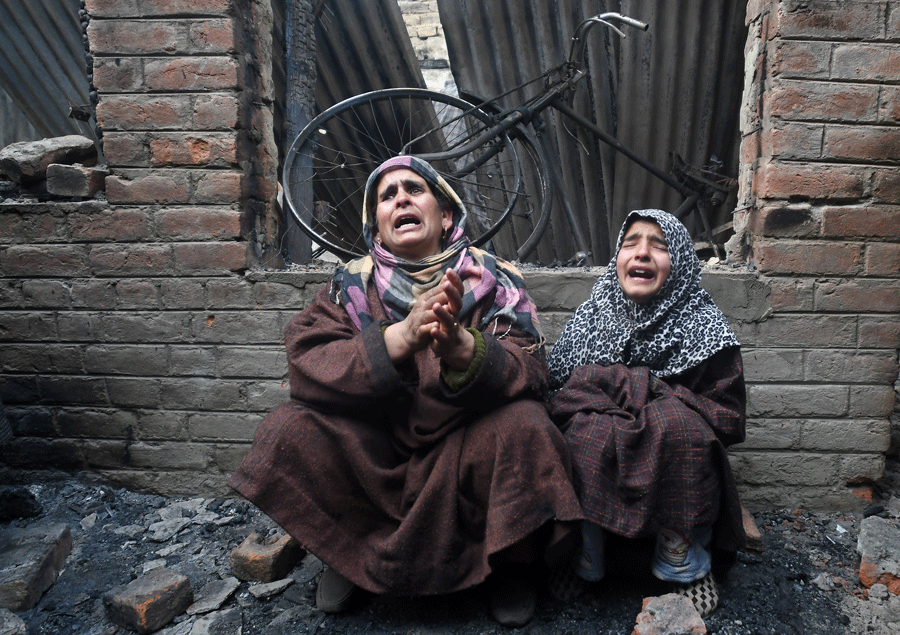
The records of the bilateral “composite dialogue,” which started in 1985 and dragged on till 2008, followed by a “comprehensive dialogue” that began in 2015, indicate that the two countries failed to address even those issues – such as the dispute over Sir Creek and Siachen Glacier – which were seen as ‘low hanging fruits’ that were easy to pluck. The responsibility for the failure of the bilateral talks overwhelmingly rests on the shoulders of New Delhi which did not implement the decisions considered a done deal after the talks, such as a pulling out of troops from the Siachen Glacier.
So if the past is any guide, why the result of any such efforts in the future would be different is a point to ponder, as an economically buoyant India attempts to redefine red lines in its favour vis-a-via Pakistan on the back of New Delhi’s growing diplomatic clout in key world capitals.
For Pakistan, the situation has never been as challenging and tricky in recent years as it now stands, with prospects for regional peace remaining precarious.
Pakistan – despite constraints – gave an effective military and political response following the crossing of the LoC and international frontiers by Indian fighter aircraft on February 26 to bomb a deserted area in the Khyber-Pakhtunkhawa province. Though India contends hitting an alleged “terrorist camp,” there is no evidence on the ground to back these claims.
India justified the attack in the name of self-defence and in retaliation to the February 14 suicide bombing in Occupied Kashmir’s Pulwama area which killed more than 40 Indian soldiers. But according to Foreign Office sources at home, in the dossier presented to Pakistan after the escalation of hostilities, India failed to provide any definitive evidence of Pakistani involvement in the attack.
Although the Indian attack failed, it was an indisputable act of aggression that aimed to set a precedent in India’s favour for the future. Pakistan had no choice other than to respond. The very next day, pilots of the Pakistan Air Force downed two Indian fighter aircrafts and bombed six targets in Occupied Kashmir, clearly demonstrating the forces’ capacity, ability and will to retaliate when attacked. However, even the retaliation was restrained. Director General, Inter Services Public Relations, Maj. General Asif Ghafoor told reporters that as the Indian attack did not cause any loss of life, the PAF bombed close to Indian military positions rather than hitting them directly to avoid damage and casualties. (SEE BOX FOR DETAILS)
Facts also exposed India’s propaganda. The Pulwama attacker was a local youngster, Aqeel Dar, who wanted to avenge Indian atrocities in the occupied region. Dar had joined militants because he was humiliated and tortured by Indian troops. Yet, even before the fires of the Pulwama attack had been doused, anti-Pakistan hysteria gripped the Indian media.
And while Pakistan scored some tactical diplomatic and military success in this latest Indo-Pak impasse, its one-sided efforts to lower tensions do not raise many hopes for peace, as India remains adamant about pursuing new rules of engagement.
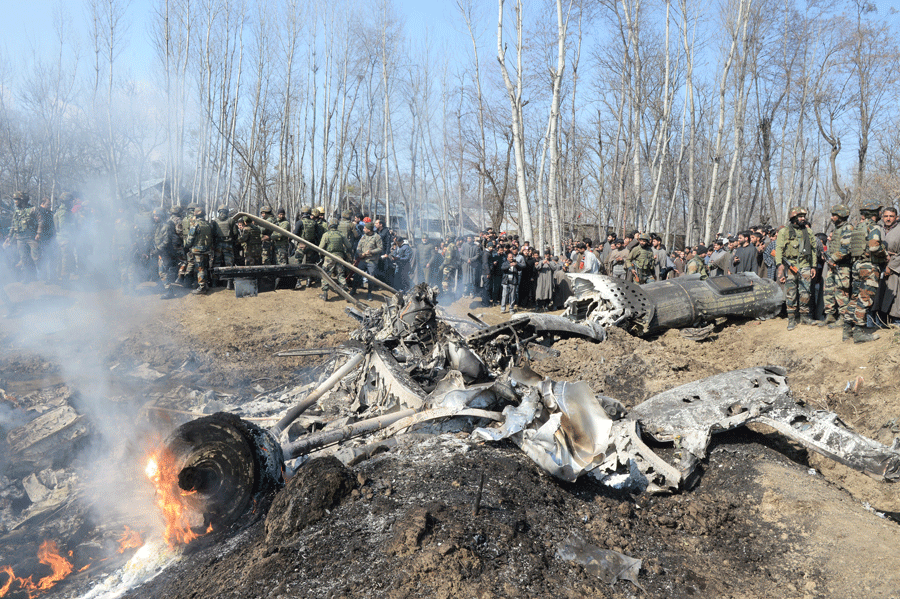
IAF pilot of the crashed plane shot down (below) by PAF fighter pilots.
Firstly, the Indian leadership is confident that the time is now ripe to up the anté of tension with Pakistan in the push to establish India as an unchallenged dominant power in the region and beyond. This confidence emerges due to India’s growing economic clout and its strategic partnership with the United States. That partnership was seen at work recently as Washington endorsed the Indian position that it had carried out “counter-terrorism actions on February 26” and advised Pakistan to take “meaningful action against terrorist groups operating on its soil.”
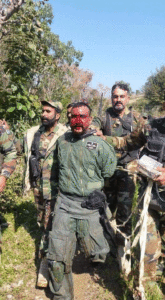 New Delhi has also been able to build relationships with other regional countries and neutralise some of Pakistan’s allies. The appearance of the Indian Foreign Minister Sushma Swaraj as guest of honour at the Organisation of Islamic Conference (OIC) remains one example of India’s successful diplomatic push.
New Delhi has also been able to build relationships with other regional countries and neutralise some of Pakistan’s allies. The appearance of the Indian Foreign Minister Sushma Swaraj as guest of honour at the Organisation of Islamic Conference (OIC) remains one example of India’s successful diplomatic push.
Secondly, India wants to divert attention from its human rights violations and the state-terrorism it has unleashed against citizens in Occupied Kashmir.
Thirdly, India aims to paint the burgeoning legitimate, and now entirely indigenous freedom struggle in Kashmir, as terrorism. And in the post-9/11 world, the Indian leadership has found a conducive environment to associate the Kashmiri freedom movement with terrorism.
Last but not least, India and some of its backers want to keep Pakistan destabilised at a time when the new government at home is trying to revive the economy and introduce reforms and clean the Augean stables. An escalation of tension between the two countries and mobilisation of troops even without a war remains a drain on the economy and discourages foreign and local investment.
To make the situation for Pakistan even more fraught, some international players appear to be working in tandem at various levels to keep the country under pressure. For example, Pakistan fulfilled almost all the requirements set by the Financial Action Task Force (FATF) aimed at stopping money-laundering and terror-financing to get the country’s name removed from the Grey List. But suddenly FATF had another prerequisite before this could happen: Pakistan would have to declare the source of financing of its nuclear and security programme, a precondition which wasn’t mentioned before.
Therefore, continued tensions and the “no talks” posture with Pakistan fits in well with India’s Hindu extremist government’s game plan which, along with its international backers, want a pliant Pakistan.
Indians feel that they can get away with their genocidal policies in Occupied Jammu & Kashmir, put this core issue on the back-burner once for all, and engage Pakistan on their own terms as and when desired.
Meanwhile, the Pakistani leadership – at least in public – appears to agree on one point. Not just many Pakistani analysts, but even government top-guns, including Prime Minister Imran Khan, have repeatedly said that Modi orchestrated tensions because of the looming elections in which the anti-Pakistan card sells in India’s cow-belt.
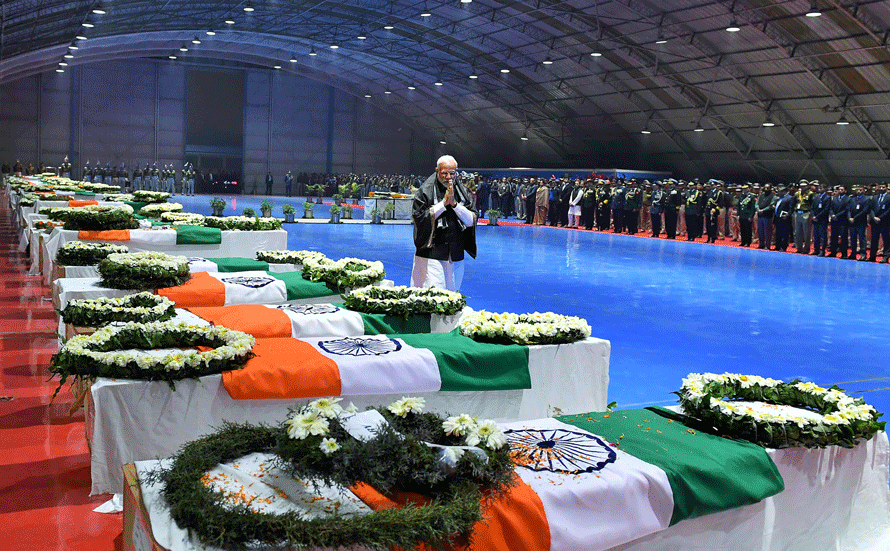
Narendra Modi walks past the remains of the 40 soldiers killed in the Pulwama attack
Elections are certainly a factor prodding the Modi government to get tough on Pakistan, but they are not the only factor. The Indians have greater designs in the region, and the “no talks” mantra with Pakistan suits them and their backers.
India as a hegemonic power is looking at ways to escalate tensions and create a new normal in the region where it can take unilateral military action against Pakistan in the name of self-defence against alleged terrorists. This is, of course, an unacceptable situation for Pakistan, which in round one fully demonstrated its capabilities and will, and denied India the chance to tilt the balance in its favour.
But going forward, Islamabad will have to perform a high-wire diplomatic act to avoid the escalation of tension with India, resist diplomatic pressure regarding its core national interests, including a stand on Kashmir and the nuclear programme, and ensure that its national security red line stays in place.
At the same time, the government has to ensure internal security at every cost. On this front, Pakistan has already achieved a lot as the country has, virtually single-handedly, turned the tide of terrorism and abolished the terrorists’ safe-havens. But the fight against extremism is still far from over. It needs to be taken to the next level in line with the 20-point National Action Plan, which was the result of a national consensus following the terrorist attack on the Army Public School Peshawar on December 16, 2014. The past government failed to empower and activate the National Counter Terrorism Authority, introduce reforms in the police and judiciary, effectively curb the extremist narrative, and defang some of the already banned organisations.
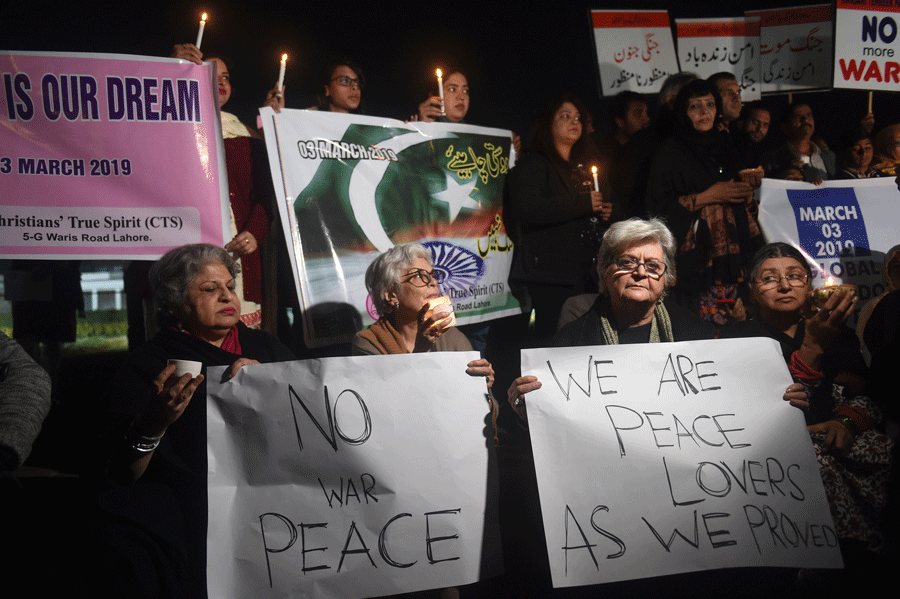
Make love not war: Peace activists demonstrate on both sides of the border.
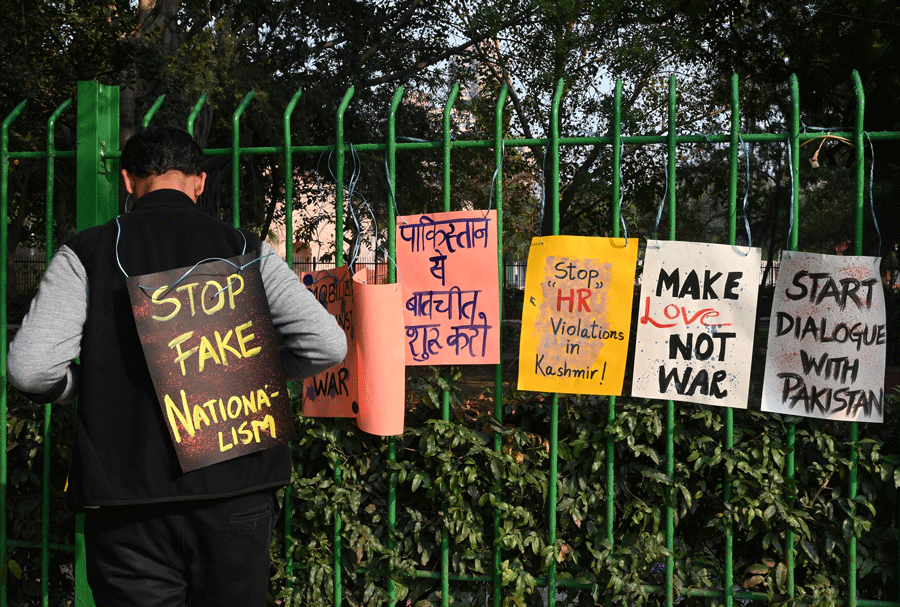
This Pakistan has to do in its own national interest and in line with the policy that only the state, not non-state actors, has the authority to formulate the rules of engagement vis-à-vis terrorism and related activity. There is already a consensus on this issue within all the state institutions. But it is time to double these efforts to deny anti-Pakistan forces the propaganda space they enjoy because of various loopholes.
In the latest crisis with India, the Pakistani leadership has displayed a great deal of sagacity, restraint and maturity to avoid a war. Now Prime Minister Imran Khan and his team have to stay the course and utilise the crisis to write a new set of rules in Pakistan’s favour.
Plane Talk
The Pakistan Air Force’s successful shooting-down of two Indian Air Force planes graphically illustrated the former’s superiority in air power.
There are more than 40,000 madrassas (seminaries) in almost every nook and corner of Pakistan. For the Modi government, hitting any one of them in an airstrike and declaring it a terrorist centre would have served as a good propaganda tool: a seminary destroyed and the bodies of dead militants ie. success by the standards of current western and Indian conventional wisdom. That’s what Prime Minister Narendra Modi hoped to achieve to intensify pressure on Pakistan, get western public opinion and capitals behind him, and satisfy the war thirst of his own constituency of hardline extremist Hindus.
On February 26, any one of the several madrassas in Balakot, where Afghan and Kashmiri militants once used to operate a centre, was their target. In fact, that centre had been closed a long time ago, after former President Pervez Musharraf announced a ban on more than 20 militant groups, including Jaish-e-Mohammed in 2002. The screws were further tightened during subsequent crackdowns in 2005 and onwards.
The Indians, meanwhile, had, without producing any evidence to corroborate this, been shouting themselves hoarse that Jaish-e-Mohammed was behind the February 14 Pulwama suicide attack that had killed more than 40 of its soldiers.
In the wake of the Indian propaganda, and its web of what is increasingly being proved to be lies, Prime Minister Imran Khan offered Prime Minister Modi talks and expressed a willingness to help in investigating the Pulwama incident. Instead, the Indians started mobilising troops in line with their “Cold Start” strategy. Pakistan reacted with parallel manoeuvres and mobilisation as per its doctrine, which has been in place since the days of General Ashfaq Pervez Kayani, which has made India’s Cold Start strategy ineffectual by stealing the element of surprise from it.
In a state of high alert due to Indian warmongering, Pakistani radars first detected the enemy aircraft heading toward the country from the Lahore-Sialkot sector in the wee hours of February 26. Pakistan’s Combat Air Patrol (CAP), which was already in the air, headed straight out to face them.
Minutes later, a second Indian aircraft formation was detected in the Okara-Bahawalpur sector and Pakistan’s second CAP was scrambled into the air. Later, a third and a heavier formation of Indian aircraft was spotted by the radar, heading towards the Line of Control. Within moments, a third CAP, from a peace-time base, took to the air.
Out of the 14 aircraft despatched, four Indian aircraft crossed the LoC four to five nautical miles into Pakistan at around 2:55 am and remained in the Pakistani airspace for around four minutes, turning back when they detected Pakistani aircraft approaching. They left, firing four missiles as they headed out, which landed in a deserted area in Balakot. Pakistani aircraft did not have a knee-jerk reaction and go in hot pursuit. But the Pakistani armed forces, which were already on alert, prepared to react.
“There is no blind spot on our eastern frontier, where our radars remain focused 24/7,” said a senior military official. “Especially, during times like these, we have to be extra vigilant and alert.”
Pakistanis wanted to respond to the Indian aggression immediately. But, according to a senior Pakistan Army officer, “we wanted to gauge the extent of damage first.” Within 30 to 40 minutes after the missiles had been dropped, the exact location where they landed was identified. And it was learnt that barring knocking out a few trees, no damage was done, he said. Later, when local and foreign media personnel visited the site, their account corroborated Pakistan’s official claim.
Pakistan reacted the next day in broad daylight as its JF-17 Thunder aircraft, without crossing into Indian-occupied territory, locked the Indian military positions, but fired close to them to avoid major damage and prevent casualties. One of the targets which was locked was an Indian Brigade’s Headquarters, where senior Indian military officials were also present at the time of the attack. They heard the pounding and knew that Pakistan had responded.
Keeping up with the Pakistani tradition of being one-up, the Pakistani Air Force fired six missiles compared to India’s four. The intent was to make it clear to the Indians that any aggression would be matched by similar, but greater retaliation, says the army officer.
In response to the Pakistani strike, the Indians then again sent their aircraft across the LoC, but found the Pakistani Air Force ready for them. Two Indian aircraft were shot. One Indian Mig 21 crashed in Azad Kashmir, its pilot ejected and was later arrested. The pilot of the other plane, a Russian SU – 30, tried to make it back across the border, managed to cross the LoC, but crashed before he could eject, and was killed.
Compared to Indian pilots, who have not seen any real action, Pakistani pilots are battle-hardened and better trained because of the ongoing war against terrorism in which they have to dive to physically spot their targets to hit them. That the Indian Air Force pilots are less experienced can be gauged by the two operating the aircraft which breached the LoC. They fired missiles randomly and at too high an altitude, and the results speak for themselves.
Later in the day, after the shooting down of the two Indian aircraft, the National Command Authority went into a huddle.
“Now it is up to the Indians whether they want to climb the escalation ladder further or go for an exit,” said the senior Pakistan Army official. “Pakistan is ready for both scenarios – escalation as well as de-escalation.”
Amir Zia is a senior Pakistani journalist, currently working as the Chief Editor of HUM News. He has worked for leading media organisations, including Reuters, AP, Gulf News, The News, Samaa TV and Newsline.



